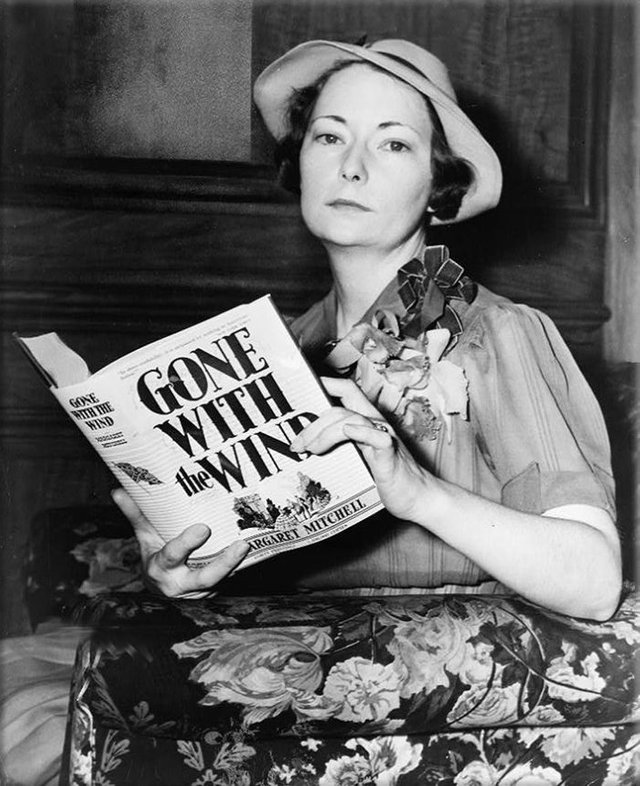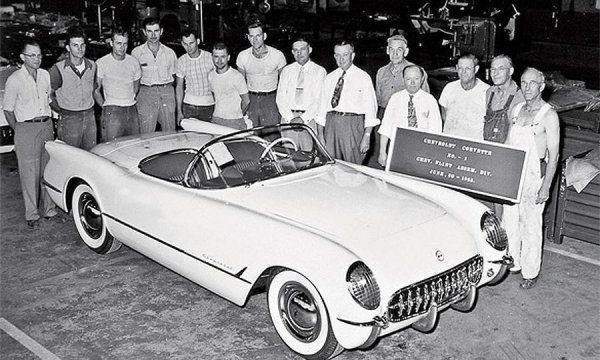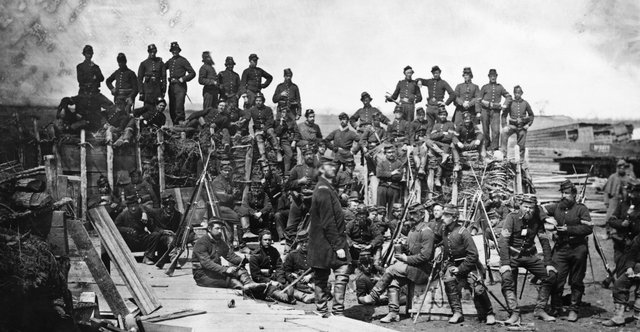1936
Gone with the Wind published

Margaret Mitchell’s Gone with the Wind, one of the best-selling novels of all time and the basis for a blockbuster 1939 movie, is published on this day in 1936.
In 1926, Mitchell was forced to quit her job as a reporter at the Atlanta Journal to recover from a series of physical injuries. With too much time on her hands, Mitchell soon grew restless. Working on a Remington typewriter, a gift from her second husband, John R. Marsh, in their cramped one-bedroom apartment, Mitchell began telling the story of an Atlanta belle named Pansy O’Hara.
In tracing Pansy’s tumultuous life from the antebellum South through the Civil War and into the Reconstruction era, Mitchell drew on the tales she had heard from her parents and other relatives, as well as from Confederate war veterans she had met as a young girl. While she was extremely secretive about her work, Mitchell eventually gave the manuscript to Harold Latham, an editor from New York’s MacMillan Publishing. Latham encouraged Mitchell to complete the novel, with one important change: the heroine’s name. Mitchell agreed to change it to Scarlett, now one of the most memorable names in the history of literature.
Published in 1936, Gone with the Wind caused a sensation in Atlanta and went on to sell millions of copies in the United States and throughout the world. While the book drew some criticism for its romanticized view of the Old South and its slaveholding elite, its epic tale of war, passion and loss captivated readers far and wide. By the time Mitchell won the Pulitzer Prize for Fiction in 1937, a movie project was already in the works. The film was produced by Hollywood giant David O. Selznick, who paid Mitchell a record-high $50,000 for the film rights to her book.
After testing hundreds of unknowns and big-name stars to play Scarlett, Selznick hired British actress Vivien Leigh days after filming began. Clark Gable was also on board as Rhett Butler, Scarlett’s dashing love interest. Plagued with problems on set, Gone with the Wind nonetheless became one of the highest-grossing and most acclaimed movies of all time, breaking box office records and winning nine Academy Awards out of 13 nominations.
Though she didn’t take part in the film adaptation of her book, Mitchell did attend its star-studded premiere in December 1939 in Atlanta. Tragically, she died just 10 years later, after she was struck by a speeding car while crossing Atlanta’s Peachtree Street. Scarlett, a relatively unmemorable sequel to Gone with the Wind written by Alexandra Ripley, was published in 1992.
Automotive
1953
First Corvette built

On this day in 1953, the first production Corvette is built at the General Motors facility in Flint, Michigan. Tony Kleiber, a worker on the assembly line, is given the privilege of driving the now-historic car off the line.
Harley J. Earl, the man behind the Corvette, got his start in his father’s business, Earl Automobile Works, designing custom auto bodies for Hollywood movie stars such as Fatty Arbuckle. In 1927, General Motors hired Earl to redesign the LaSalle, the mid-range option the company had introduced between the Buick and the Cadillac. Earl’s revamped LaSalle sold some 50,000 units by the end of 1929, before the Great Depression permanently slowed sales and it was discontinued in 1940. By that time, Earl had earned more attention for designing the Buick “Y Job,” recognized as the industry’s first “concept” car. Its relatively long, low body came equipped with innovations such as disappearing headlamps, electric windows and air-cooled brake drums over the wheels like those on an airplane.
After scoring another hit with the 1950 Buick LeSabre, Earl headed into the 1950s–a boom decade for car manufacturers–at the top of his game. In January 1953, he introduced his latest “dream car,” the Corvette, as part of GM’s traveling Motorama display at the Waldorf Astoria Hotel in New York City. The sleek Corvette, the first all-fiberglass-bodied American sports car, was an instant hit. It went into production the following June in Flint; 300 models were built that year. All 1953 Corvettes were white convertibles with red interiors and black canvas tops. Underneath its sleek exterior, however, the Corvette was outfitted with parts standard to other GM automobiles, including a “Blue Flame” six-cylinder engine, two-speed Powerglide automatic transmission and the drum brakes from Chevrolet’s regular car line.
The Corvette’s performance as a sports car was disappointing relative to its European competitors, and early sales were unimpressive. GM kept refining the design, however, and the addition of its first V-8 engine in 1955 greatly improved the car’s performance. By 1961, the Corvette had cemented its reputation as America’s favorite sports car. Today, it continues to rank among the world’s elite sports cars in acceleration time, top speed and overall muscle.
Civil War
1862
Fighting continues in the Seven Days’ Battles

The Seven Days’ Battles continue at Glendale (White Oak Swamp), Virginia, as Robert E. Lee has a chance to deal a decisive blow against George B. McClellan’s Army of the Potomac. Lee’s Army of Northern Virginia had already won the Seven Days’ Battles, but the Confederates’ attempt to rout McClellan cost many Southern casualties.
The Seven Days’ Battles were the climax of McClellan’s Peninsular campaign in Virginia. For two months, the Union army sailed down Chesapeake Bay and then inched up the James Peninsula. In late June, the two forces began a series of clashes in which McClellan became unnerved and began to retreat to his base at Harrison’s Landing on the James River. Lee hounded him on the retreat.
On June 30, Lee plotted a complex attack on the Yankees as they backed down the peninsula. He hoped to hit the front, flank, and rear of the Union army to create confusion and jam the escape routes. Those attacks did not succeed, as they required precise timing. Lee’s own generals were confused, the attacks developed slowly, and they made only temporary ruptures in the Federal lines. Most disappointing for Lee was the performance of General Thomas J. “Stonewall” Jackson. Jackson was coming off a brilliant campaign in the Shenandoah Valley, but he showed little of his skill during the Seven Days’ Battles. His corps halted at the edge of White Oak Swamp, and he focused his attention on taking a bridge from the Yankees. His officers located fords that would have allowed his men to bypass the bottleneck, but Jackson stayed put. This allowed the Union to move troops from Jackson’s sector of the battlefield to halt a Confederate attack in another area.
Lee’s failure at Glendale permitted McClellan’s army to fall back to higher, more defensible locations. The next day, July 1, Lee assaulted Malvern Hill and his army suffered tremendous casualties in the face of a withering Union artillery barrage.
Cold War
1950
Truman orders U.S. forces to Korea
.jpg)
Just three days after the United Nations Security Council voted to provide military assistance to South Korea, President Harry S. Truman orders U.S. armed forces to assist in defending that nation from invading North Korean armies. Truman’s dramatic step marked the official entry of the United States into the Korean War.
On June 25, 1950, military forces from communist North Korea invaded South Korea. South Korean forces and the small number of U.S. troops stationed in the nation reeled under the surprise attack. On June 27, the United States asked the Security Council in the United Nations to pass a resolution calling on member states of the United Nations to assist South Korea. With the Soviets boycotting the meeting for other reasons, the resolution passed. Three days later, President Truman ordered U.S. ground forces into South Korea and the troops entered South Korea that same day. At the same time, Truman ordered the U.S. Air Force to bomb military targets in North Korea and directed the U.S. Navy to blockade the North Korean coast.
Truman’s action signaled the beginning of official and large-scale U.S. participation in the Korean War. Over the next three years, the United States provided at least half of the U.N. ground forces in Korea and the vast majority of the air and sea forces used in the conflict against North Korea and, later, against communist China, which entered the war on the side of North Korea in late 1950. Nearly 55,000 Americans were killed in the war and over 100,000 were wounded. Cost estimates for the war ranged as high as $20 billion. In July 1953, an armistice was signed that ended the fighting and left Korea a divided nation.